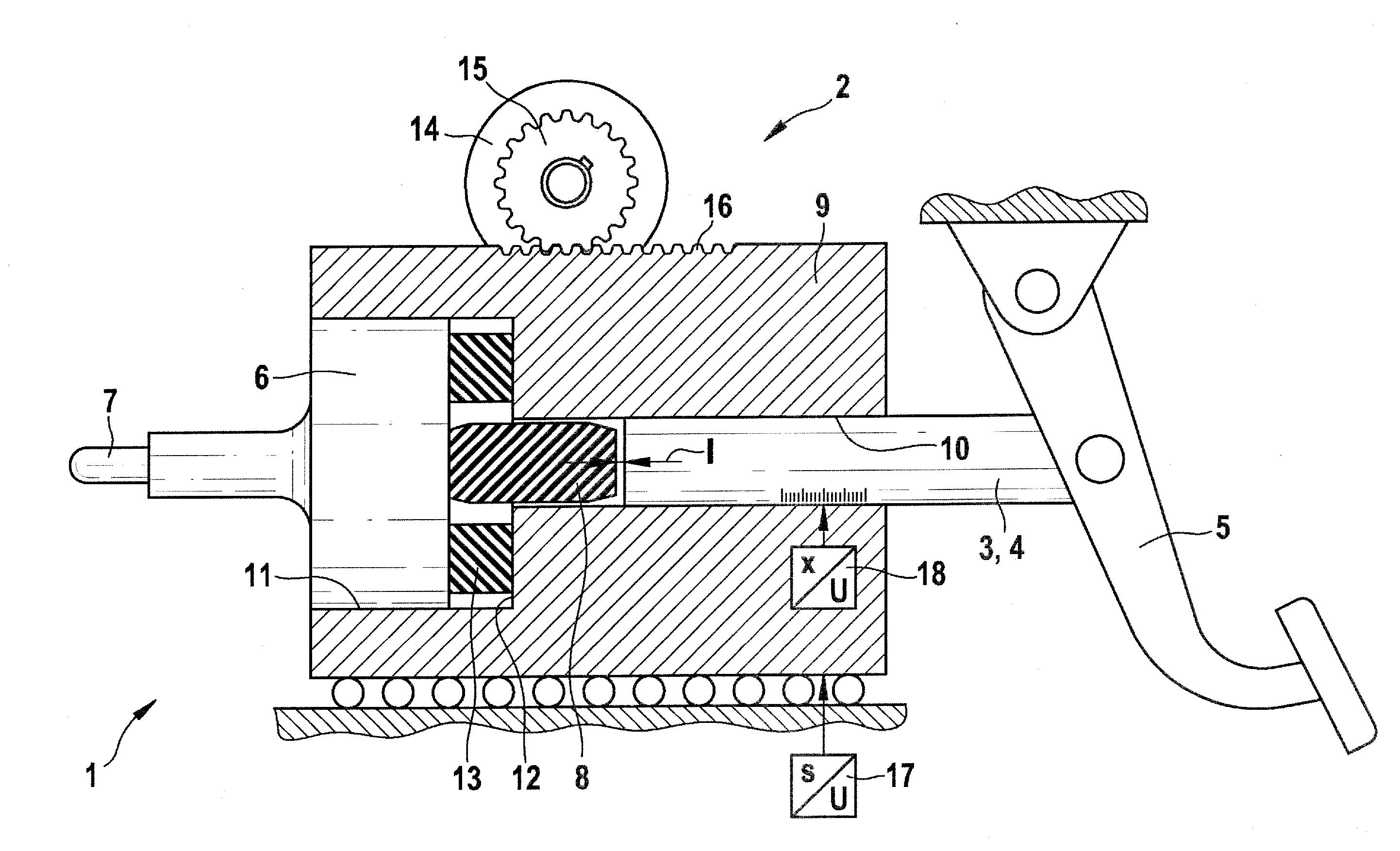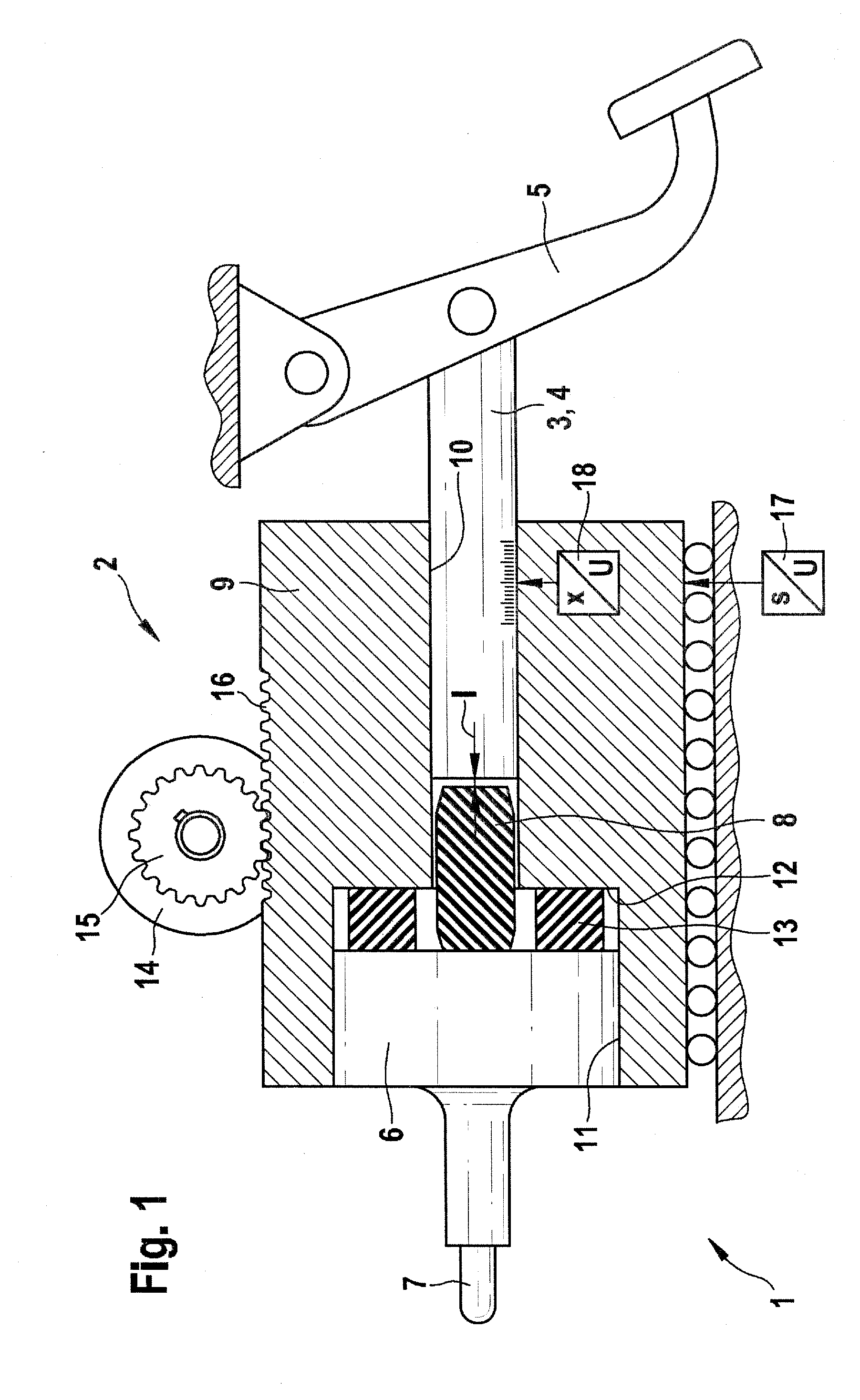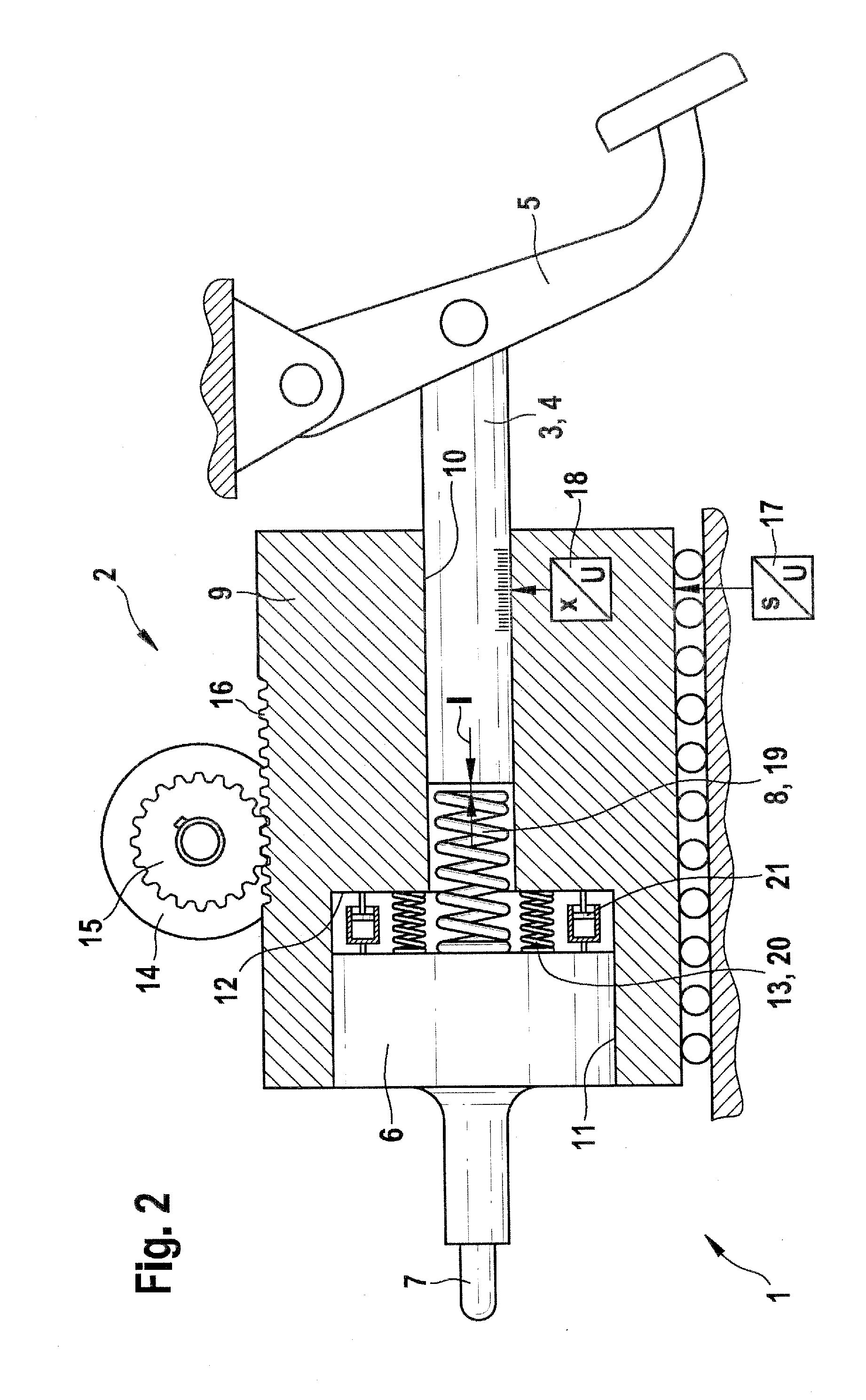Brake booster
- Summary
- Abstract
- Description
- Claims
- Application Information
AI Technical Summary
Benefits of technology
Problems solved by technology
Method used
Image
Examples
Embodiment Construction
[0026]The brake booster 1 according to the invention, shown in FIG. 1, is an electromechanical brake booster 1, having an electromagnetic actuator 2, to be explained hereinafter, and a piston rod 3 that can also be conceived of in general as an input element 4 that is actuatable by muscle power. The piston rod 3 is connected in articulated fashion to a brake pedal 5. The brake booster 1 furthermore has an output element 6, with a piston-shaped base and a push rod 7, with which, in a manner known per se, a primary or rod piston, not shown, of a hydraulic master cylinder, also not shown, of a hydraulic vehicle brake system can be subjected to an actuation force.
[0027]Between the output element 6 and the piston rod 3 is a rubber-elastic boltlike transmission element 8. Via the transmission element 8, a muscle power, which is exerted on the piston rod 3 by the brake pedal 5, can be transmitted to the output element 6 of the brake booster 1. The transmission element 8, which has elastic ...
PUM
 Login to View More
Login to View More Abstract
Description
Claims
Application Information
 Login to View More
Login to View More - R&D
- Intellectual Property
- Life Sciences
- Materials
- Tech Scout
- Unparalleled Data Quality
- Higher Quality Content
- 60% Fewer Hallucinations
Browse by: Latest US Patents, China's latest patents, Technical Efficacy Thesaurus, Application Domain, Technology Topic, Popular Technical Reports.
© 2025 PatSnap. All rights reserved.Legal|Privacy policy|Modern Slavery Act Transparency Statement|Sitemap|About US| Contact US: help@patsnap.com



